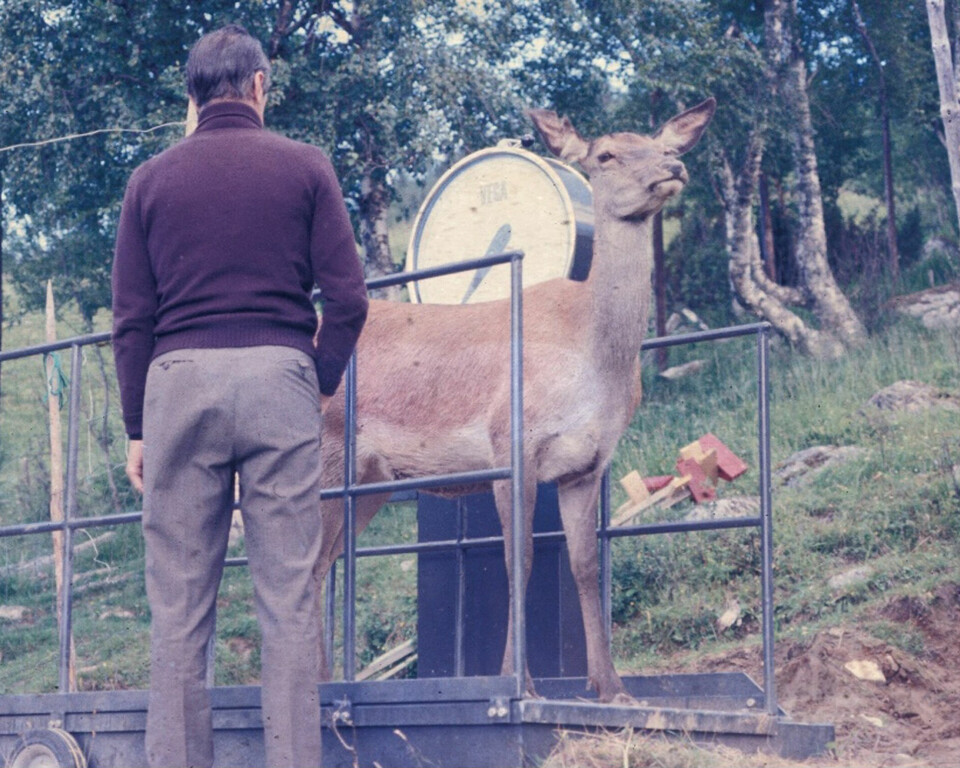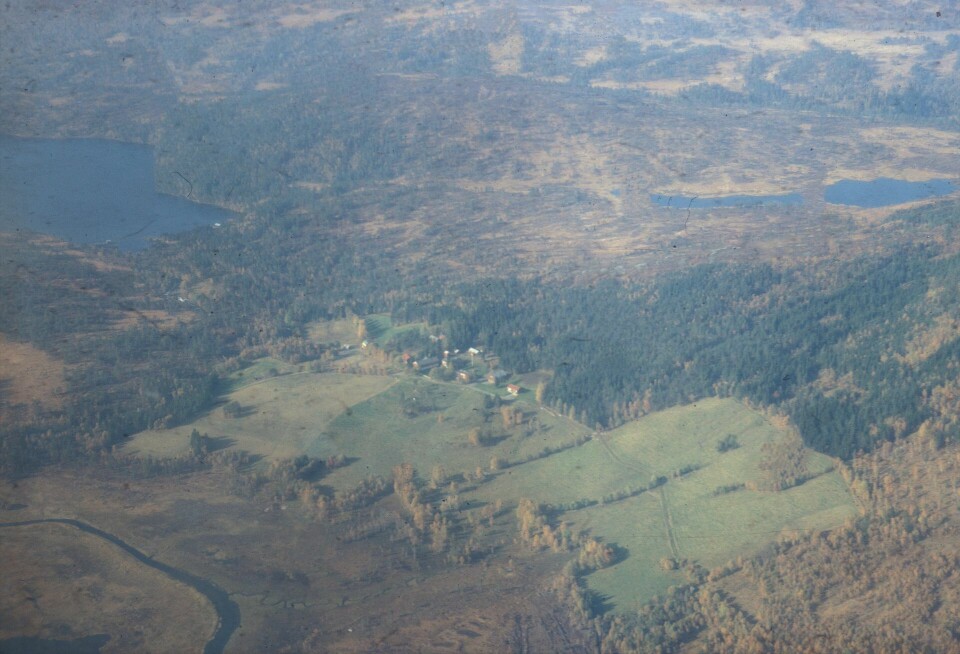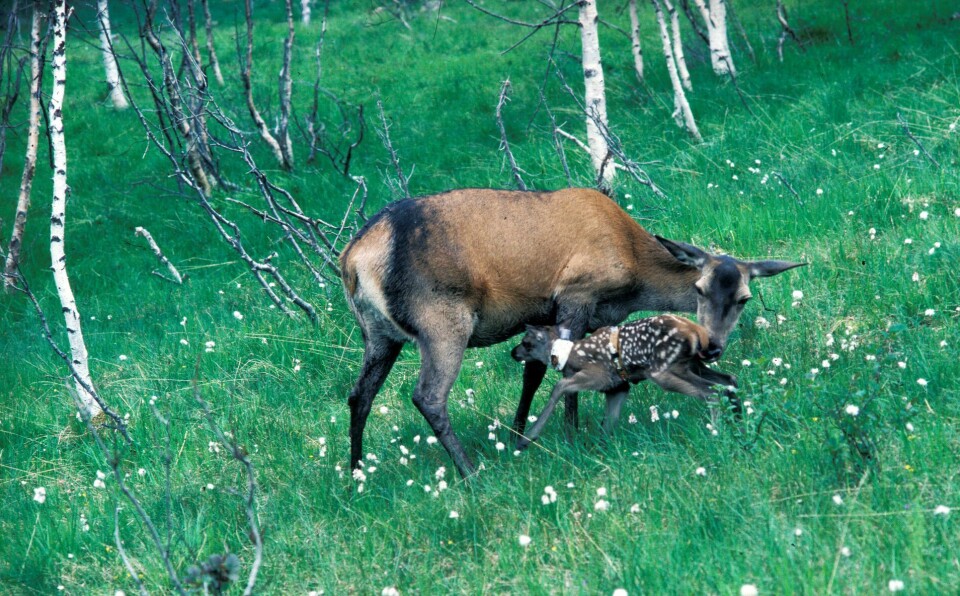THIS CONTENT IS BROUGHT TO YOU BY University of Oslo - read more

When is the best time to weigh a deer?
The weight of a deer seems like a simple measure – a number measured in kilograms. It is not that straightforward, though. At what time of year, and at what stage in its life, should the deer be weighed?
When researchers began investigating the weight of deer, they found large fluctuations throughout the year. This also applied to captive deer that were fed during winter. The data used for the research dates back to the 1970s.
However, it was only recently that the weight issue had come up in connection with other research questions:
“We are creating models to determine how the deer population is affected by grazing on cultivated land,” explains Yngvild Vindenes, associate professor in population dynamics at the University of Oslo.

Together with Atle Mysterud, a professor in ecology at the Department of Biosciences, she will create models for how a population is impacted.
“The deer can grow larger on cultivated land than on uncultivated land, and it has a better survival rate. Therefore, the weight of an individual influences the population – or in summary: What does a kilogram of deer mean for the deer population?” Mysterud explains.
Population growth models must therefore be linked to an individual’s weight.
Tougher up north
It is known that animals that live in northern areas are subject to significant pressures in the winter. Therefore, their weight varies. But by how much and in what way?
It is challenging to weigh wild individuals several times throughout their lives.
Therefore, there isn't well-documented evidence on how much the weight of wild animals fluctuates, regardless of whether it’s a deer or a bear.
“You can't capture wild deer as many times as necessary for this research,” Vindenes says.
Solid research from the 1970s
Fortunately, there is good data available. Basic research conducted at Songli research farm from the 1970s to the 1990s had good data points.
Rolf Langvatn, a former researcher at the Norwegian Institute for Nature Research (NINA) and professor at the University Centre in Svalbard (UNIS), was a central figure in this work.
For several decades, he has weighed, measured, and collected data on wild deer. He also followed up on several captive animals at Songli research farm. The animals recognised him, and they had names such as Frida and Fredrik.

“There have been deer at Songli farm since the 1950s,” Langvatn says.
Vindenes adds that there were few individuals, but that they have a lot of data per individual.
The research was conducted on captive animals with standardised feeding. The fluctuations in weight would likely be even greater for wild animals with more variable access to grazing.

Largest at the start of the hunting season
Vindenes used weight measurements of 74 of the captive animals that Langvatn had followed for over 20 years, and determined which models best fit the actual observations.
“The model that appears to be the best fit is the one that shows weight not only fluctuating with the season, but also that the peak shifts with age,” she says.
They found that the calves are largest in December, and become thinner throughout the winter. The adults, on the other hand, are largest in September. This is likely noticeable to many hunters. At the start of the hunting season on 1 September, some calves are still quite small, while calves shot closer to Christmas tend to be larger.
“We speculate on why the adults stop growing in September. Couldn’t they keep eating for longer? It’s natural to think it has something to do with reproduction and the breeding season in October,” Vindenes says.

Langvatn also highlights the importance of how the hormone composition changes in deer seasonally. In winter, they go into ‘energy-saving mode’ with a low metabolism. They also change their behaviour to less energy-demanding activities.
A herd of domesticated research animals
The research animals had to be domesticated for this research to be possible. Wild animals would have been stressed by the weighing process, and it is not possible to track a wild individual in the same way.
Langvatn further explains that deer are suitable research animals because they are social herd animals and can be domesticated.
“We could pet them, and they would come when they heard us. In order for the data we collected to be reliable, we had to work with trusting animals, so stress wouldn't affect the results. When we approached the enclosure, it was almost a fight to get on the scale because they knew they would get a handful of oats,” he says.
He and the other researchers weighed the deer regularly to obtain precise measurements of the cyclical changes in weight throughout the year.
“We did this with domesticated animals, but no matter how you feed a deer, it will lose weight in winter. This is an adaptation to life at northern latitudes,” Langvatn says.
Not all the material has been analysed yet
Langvatn knew that good time series with accurate measurements were important, but he did not know the significance this research would have.
The amount of data they helped collect is so large that not all of the material has been analysed yet.
“I started collecting jaws and data from animals shot during hunting. We have measured and weighed over 100,000 wild individuals from different parts of the country," he says.
Based on this, the researchers have been able to show some correlations between climate, weather conditions, the quality of the animals' habitats, and how this affects their survival.
"It's possible that this is the world's largest database for deer where the measurements and methods have been consistent throughout the entire time period,” Langvatn says.
Long and accurate time series are extremely valuable
Langvatn explains that there is a lot of research showing the importance of accurate time series over time.
“The North Atlantic Oscillation was discovered because someone measured variations in air pressure in Iceland and the Azores. Small differences in air pressure leads to significant differences in weather. These measurements started in 1864, long before anyone knew the significance they would have,” Langvatn explains.
The great value of such data is that it can never be reconstructed with certainty in the future.
"What was measured a hundred years ago serves as reference points and scientific landmarks that allow us to trust trends that arise in these datasets. That is why this deer time series is very valuable,” he says.
According to Langvatn, there are no alternatives to acquiring facts when trying to understand ecological systems. We have to make measurements and observations over time.
Norwegian deer research is internationally known
When the activity level at Songli was at its peak, there were many international researchers conducting their experiments there.
Langvatn collaborated with Scottish researchers who were experts in observation and behaviour. The Scottish researchers had information and research that complemented the Norwegian physiological and ecological experiments.
“Songli was purchased by the state with the purpose of being a research station for wildlife and freshwater fish. Businessman Thams, who previously owned Songli, had an enclosure with tame deer on the property. This allowed us to do some fundamental research on deer reproduction, growth, and development,” Langvatn explains.
“It's sad that the management of this property has not continued as it was intended. Today, the property is research-wise idle."
References:
Mysterud et al. Effects of age, sex, and density on body weight of Norwegian red deer: evidence of density-dependent senescence, Proceedings of the Royal Society of London, 2001. DOI: 10.1098/rspb.2001.1585
Vindenes et al. Shifting Seasonality of Annual Growth through Ontogeny for Red Deer at Northern Latitudes, Ecosphere, vol. 14, 2023. DOI: 10.1002/ecs2.4639
Yoccoz et al. Age- and density-dependent reproductive effort in male red deer, Proceedings of the Royal Society of London, 2002. DOI: 10.1098/rspb.2002.2047

This content is paid for and presented by the University of Oslo
This content is created by the University of Oslo's communication staff, who use this platform to communicate science and share results from research with the public. The University of Oslo is one of more than 80 owners of ScienceNorway.no. Read more here.
More content from the University of Oslo:
-
A researcher has listened to 480 versions of Hitler's favourite music. This is what he found
-
Researcher: "AI weakens our judgement"
-
New, worrying trend among incels, according to researcher
-
Ship’s logs have shaped our understanding of the sea
-
New study: The dilemma of copyright in the Global South
-
How your lifestyle affects your risk of bowel cancer




































